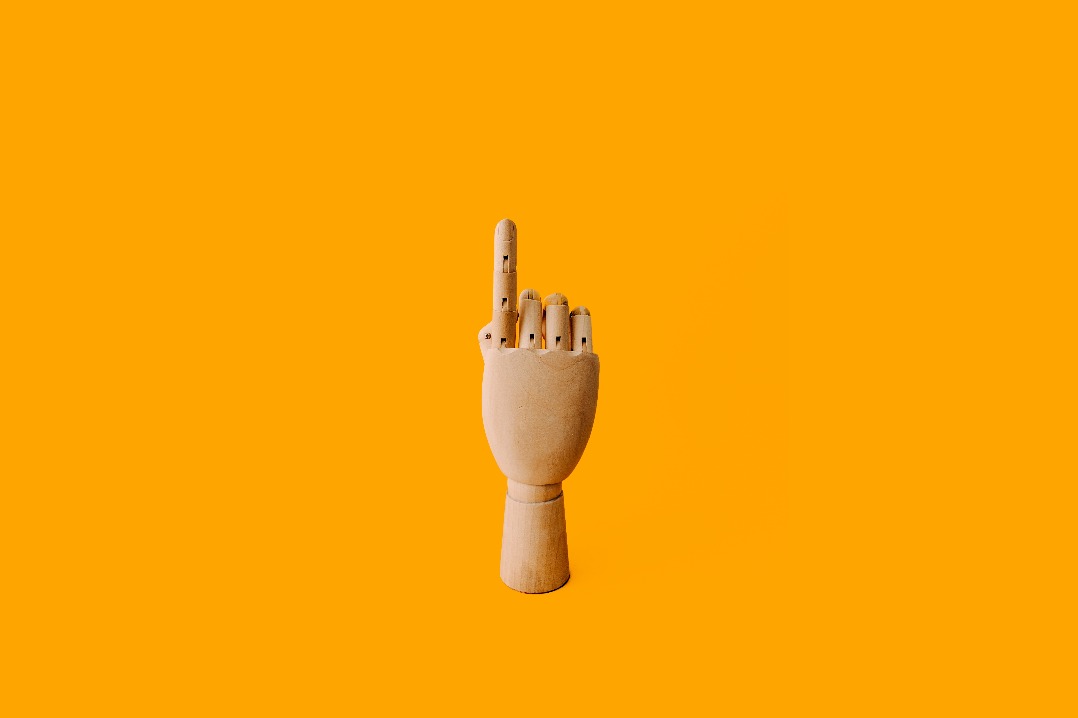Straight face? 不露声色
中国日报网 2018-12-28 11:15

Reader question:
Please explain “straight face” in this:
“Yeah, I’m fine,” he says with a straight face.
My comments:
He’s not fine. He says he’s fine only to keep everyone calm or something. He says so with a straight face, an expressionless face in order to conceal his true emotions. He may be very sad right now. Or something. But by maintaining a straight face, he’s not showing it.
Straight face, you see, is our facial expression when we’re NOT trying to make a face, so to speak. We are our usual, normal, serious selves when we speak or sit in front of the computer with a straight face.
A poker face, for example, is a form of straight face. You know, when we play poker, we don our best poker face, a motionless face so that our opponents won’t be able to tell from our facial expression what kind of hand we have, good or bad.
A deadpan, for another example, is a straight face. But a deadpan, by definition, is deliberate. When somebody says something followed with what’s known as a deadpan, you know their facial expression is exaggeratingly impassive and motionless. Dead, in other words, as in deader than a doornail.
Or the stereotypical Englishman wears a straight face. In this case, the somber Englishman wears it constantly, like always, i.e. with a typical stiff upper lip.
At any rate, straight face is the opposite of “tongue in cheek”, when, for example, we are grinning from ear to ear, with our tongue sticking out and sideways.
Comedians are the best at telling jokes with a straight face. That is, they tell a joke as if they’re telling a normal story, as though there’s nothing funny about it. They do so for effect, in order to bring out the best laughter in the end. If they begin to laugh uncontrollably in the middle of the joke, tongue firmly in cheek, why, they’ll spoil the joke.
If they told every joke that way, tongue-in-cheek style, why, soon the audience would be laughing at the comedians instead of laughing with them.
All right. Fine. Now, media examples, all recent:
1. Senators have emerged from a classified briefing by the CIA director, Gina Haspel, saying they are certain that the Saudi crown prince, Mohammed bin Salman, ordered the murder of the Washington Post columnist Jamal Khashoggi.
“If the crown prince went in front of a jury he would be convicted in 30 minutes,” Bob Corker, the Republican chair of the Senate foreign relations committee told journalists immediately after the Haspel meeting.
A handful of leading senators from both parties attended the secure briefing from Haspel, who flew to Turkey to hear tapes of the 2 October killing from Turkish intelligence intercepts.
The senators were not allowed to disclose details of what they were told, but their reaction reinforced reports that the CIA had accumulated substantial evidence that the crown prince (widely known by his initials MBS) was behind the murder.
The Trump administration has said that there is no “direct evidence” of the prince’s culpability, with the defence secretary, James Mattis, insisting there was no “smoking gun”, but Corker said you would have to be “willfully blind” not to see the evidence.
“There is no way anyone with a straight face could say they didn’t know what happened,” he said.
After Tuesday’s Haspel briefing, the Republican senator Lindsey Graham said: “There’s not a smoking gun, there’s a smoking saw.”
- US senators: we’re certain Saudi crown prince ordered Khashoggi’s murder, TheGuardian.com, December 4, 2018.
2. Browns fans will be using that Jim Carrey GIF all week.
Because while it might not be much of a chance, we’re saying they still have a mathematical chance to make the playoffs.
Via Mary Kay Cabot of the Cleveland Plain Dealer, the Browns have a precise way to make the playoffs, even if it’s not a terribly likely one.
To enter the playoffs as the sixth seed, they first need to win out against the Bengals and Ravens to finish8-7-1, that part makes sense.
But the Ravens would also have to lose to the Chargers, to finish 8-8 and fall out of the race themselves. And the Dolphins would have to lose one more (Jaguars, at Bills) to also go 8-8.
This is where it gets weird. The Colts (home against the Giants) and Titans (home against Washington) need to lose next week, and then tie in their finale to go 8-7-1.
In a three-team tiebreaker with the Browns at 8-7-1, the Browns would emerge based on their record against common opponents.
“Every week is playoff week,” Browns safety Jabrill Peppers said. “You can’t look too far ahead. That’s how you slip up. You look at every game as a playoff game. We can only control what we can control.
“We know some people have to lose, but we have no control over that. The only thing we can control is going out there and win every game. You’ve got Cincy and home, and you’ve got the Ravens on the road. Two AFC North games. You know I’m excited, man. Go down to Baltimore on the East Coast, play those guys down there, and then Cincy comes to us first. So those are playoff games right there, and if God blesses us, he blesses us. But if not, this is good stepping-stones for next year.”
It’s been a bit since anyone in Cleveland has been able to say that, at least with a straight face.
- Browns still have a chance, if not much of one, NBCSports.com, December 17, 2018.
3. Research published in a major medical journal concludes that a parachute is no more effective than an empty backpack at protecting you from harm if you have to jump from an aircraft.
But before you leap to any rash conclusions, you had better hear the whole story.
The gold standard for medical research is a study that randomly assigns volunteers to try an intervention or to go without one and be part of a control group.
For some reason, nobody has ever done a randomized controlled trial of parachutes. In fact, medical researchers often use the parachute example when they argue they don’t need to do a study because they’re so sure they already know something works.
Cardiologist Robert Yeh, an associate professor at Harvard Medical School and attending physician at Beth Israel Deaconess Medical Center, got a wicked idea one day. He and his colleagues would actually attempt the parachute study to make a few choice points about the potential pitfalls of research shortcuts.
They started by talking to their seatmates on airliners.
“We’d strike up a conversation and say, ‘Would you be willing to be randomized in a study where you had a 50 percent chance of jumping out of this airplane with — versus without — a parachute?’ ” Yeh says.
Only a few people said yes to this outrageous invitation, and they were excluded for reasons of questionable mental health.
The scientists had much better success asking members of their own research teams from Harvard, University of California, Los Angeles (Where Yeh’s brother is a surgery professor), and University of Michigan (where a buddy works) about volunteering to participate in the experiment on other aircraft.
In all, 23 people agreed to be randomly given either a backpack or a parachute and then to jump from a biplane on Martha’s Vineyard in Massachusetts or from a helicopter in Michigan.
Relying on two locations and only two kinds of aircraft gave the researchers quite a skewed sample. But this sort of problem crops up frequently in studies, which was part of the point Yeh and his team were trying to make.
Still, photos taken during the experiment show the volunteers were only too happy to take part. “I think people are laughing all of the way to the ground,” Yeh says.
Oh, there’s one important detail here. The drop in the study was about 2 feet total, because the biplane and helicopter were parked.
Nobody suffered any injuries. Surprise, surprise. So it’s technically true that parachutes offered no better protection for these jumpers than the backpacks.
“But, of course, that is a ludicrous result,” Yeh says. “The real answer is that that trial did not show a benefit because of the types of patients who were enrolled.”
If they had enrolled people at high risk for injury, that is people in flying aircraft, the results would have been quite different (not to mention unethical).
But something like this happens in everyday medical research. It’s far too easy for scientists who have already anticipated the outcome of their research to cherry-pick patients and circumstances to achieve the results they expect to see. This research paper carried that idea to the ridiculous extreme.
The study’s findings were published in the traditionally lighthearted Christmas issue of the medical journal, BMJ.
“It’s a little bit of a parable, to say we have to look at the fine print, we have to understand the context in which research is designed and conducted to really properly interpret the results,” Yeh says. Scientists often read just the conclusion of a study and then draw their own conclusions that are far more sweeping than are justified by the actual findings.
This is a real problem in science.
“I know that people often don’t look detailed enough into what is being investigated to know how to interpret the results of a trial,” says Cecile Janssens, an epidemiology professor at Emory University.
Janssens was delighted to come across the paper on Twitter. She says like a lot of research, its results are accurate as far as they go, but “the results can only be generalized to situations where people jump out of an aircraft within a few feet above the ground.”
She plans to give this paper to her students with a straight face and see how long it takes for them to get the deeper points about scientific methodology buried in this absurd experiment.
“It will be unforgettable,” she says — far better than assigning a straight-ahead scientific study.
- Researchers Show Parachutes Don't Work, But There's A Catch, NPR.org, December 22, 2018.
本文仅代表作者本人观点,与本网立场无关。欢迎大家讨论学术问题,尊重他人,禁止人身攻击和发布一切违反国家现行法律法规的内容。
About the author:

Zhang Xin is Trainer at chinadaily.com.cn. He has been with China Daily since 1988, when he graduated from Beijing Foreign Studies University. Write him at: zhangxin@chinadaily.com.cn, or raise a question for potential use in a future column.
(作者:张欣 编辑:丹妮)

















 英语点津微信
英语点津微信 双语小程序
双语小程序